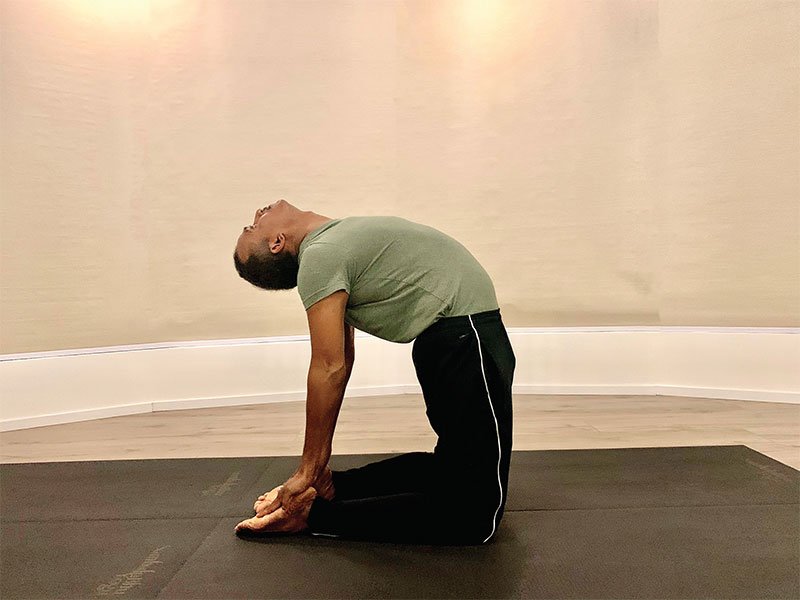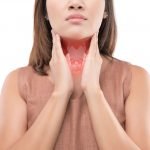
Yoga – for well-being
- bey0ndM@gz!ne
- January 24, 2020
- Default, Health-Wellness
- 0 Comments
Ustrasana (Camel Pose): Pose demonstrated by Master Kamal M
Etymology: Ustra – Camel, Asana – Posture
The body in this posture resembles the posture of a camel, it is so called Camel Pose
Chakra awareness: Crown Chakra (Sahasara Chakra), Throat Chakra (Vishuddha Chakra), Heart Chakra (Anahata Chakra) & Solar Plexus (Manipura Chakra)
Practice level: Basic
Classification: Sitting, Static, Back Arch
Health benefits
- Expands the abdominal region, improves digestion and defecation.
- Releases tensions in the ovaries and brings a balance to the entire menstrual cycle and reproductive system.
- Cures constipation with focus on the abdominal muscles.
- Regulates thyroid gland.
- Treats erectile dysfunction.
- Improves the nervous system by relaxing the entire spine.
- There are also various therapeutic benefits such as healing sluggish liver, improving respiratory and kidney functions.
Physical (Anatomical) Benefits
- Strengthens the shoulder and the back, and cures back pain
- Strengthens the thighs and knees. If a person has weak knees, performing this pose on an extra mat or blanket below the knees can open the muscles around the knee cap and making them stronger gradually.
- Improves flexibility around the spine and hips.
- Opens up the hip and strengthens the muscles in the hip region which gives better support to the spine.
- Tones abdominal muscles and reduces fat on thighs, arms, and hip region.
Step by step
- Sit on your heels (Vajrasana – Thunderbolt Pose) with hands on your thighs, take a few breaths and raise your spine up.
- Raise your body up by standing on your knees and keep the back straight. If you have any knee pain issues, you can place an extra mat or blanket under your knees. Keep your eyes open, looking forward and raising your body up with few breaths to focus. At the same time, you should tuck in the tummy.
- Keep the knees apart at a distance as same as the shoulder and hip distances. The hip, knees and feet should be aligned. The legs and the feet should be kept in a distance not wider than the knees, hence knees and ankles are in a straight line.
- Place your hands below your hip with elbows pointing backwards. Try to push the shoulders back in this position and take a few breaths.
- Keep raising up with tummy tucked in and abdomen tight. Breathe slowly and move the upper body behind curved inwards and downwards. The thighs should be tight and straight. The stretch in this pose should come from the thighs and therefore having the thighs tight and straight is important.
- With a deep inhalation, place both hands on the heels. Raise the chest up with rotating the shoulders inwards and move the head and neck backwards and you should feel the stretch at the neck.
- Begin with a slow breath, feel the stretch at the lower back and the neck. With every inhalation, try to rotate the shoulders further inwards while moving the chest higher until the chest is parallel to the floor.
- The body weight should be evenly supported by the legs and the arms.
- After a few breaths, slowly exhale and bring the neck and shoulders at a comfortable position and release your hands and back. Sit on your knees and heels again and relax.
- Completely relax your body by stretching your legs straight in a sitting position.
Contra-indications
Just as we have benefits while we practice a certain yoga pose with awareness of the body, some contraindications should also be kept in mind during the practice of this asana. Only with the supervision of an experienced yoga instructor can we get better guidance on the same.
- A weak back or an injured back may not give you a sufficient support to go into this pose.
- A person with neck injury, or spondylitis should avoid doing this pose.
- A person who suffer from migraine would find it difficult to balance in this pose with the neck down and may not be able to enjoy the pose.
- Anyone who has depression, high or low blood pressure should perform this pose carefully with the guidance of an experienced yoga instructor.
Asana Anatomy
Joint actions
- Spinal extension
- Hip extension and internal rotation
- Knee extension
- Scapula downward rotation, adduction and elevation
- Arm external rotation, extension and adduction
- Elbow extension.
Major muscles involved
- Trapezius, rhomboids, erector spinae, gluteus maximus goes in contraction
- Rectus abdominis, pectoralis major and minor, sternocleidomastoid, vastus lateralis goes on a lengthening to maintain stability along with other muscles
Warm up sequence
- Parvat – bhujangasana dynamic movement
- Ardha chandrasana
- Dhanurasana
- Ardha ustrasana
Counter posture
- Shashankasana
BIOGRAPHY
Kamal M
Founder and Director of SambalaBhu Yoga
Master Kamal is the Founder and Director of SambalaBhu Yoga. Master Kamal started learning Yoga from his father and other famous Yoga Guru at the age of 5 and has been practicing Yoga since then. He has extensive knowledge of the philosophy of Yoga and has over 13 years of professional Yoga teaching experience in Hong Kong and India. He specializes in teaching Vinyasa Yoga, Yoga Meditation, Hatha Yoga, Power Yoga, Yin Yoga, Ashtanga Vinyasa, Restorative Yoga, Pre-Natal and Post-Natal Yoga.
Master Kamal was a Champion in State Yoga Championship of Tamil Nadu Yoga Association and also obtained other various awards in India. Master Kamal holds a MSc in Yoga and PG Diploma Certification from Annamalai University in Tamil Nadu, India. He has also completed RYS Yoga Alliance 200 Hours Teaching Training.
Besides Yoga, Master Kamal is an enthusiastic athlete. He loves running, swimming, soccer and silambam. He also holds an MA in English from Madras University in Chennai and a B.Ed. in English from Tamil Nadu Teachers Education University in Chennai.

SambalaBhu Yoga
23/F, Tiffan Tower, 199 Wan Chai Road,
Hong Kong
Tel: (852) 3586 9630
Email: info@SambalaBhuYoga.com
www.SambalaBhuYoga.hk
Follow
Facebook: facebook.com/SambalaBhuYoga
Instagram: @sambalabhu_yoga




